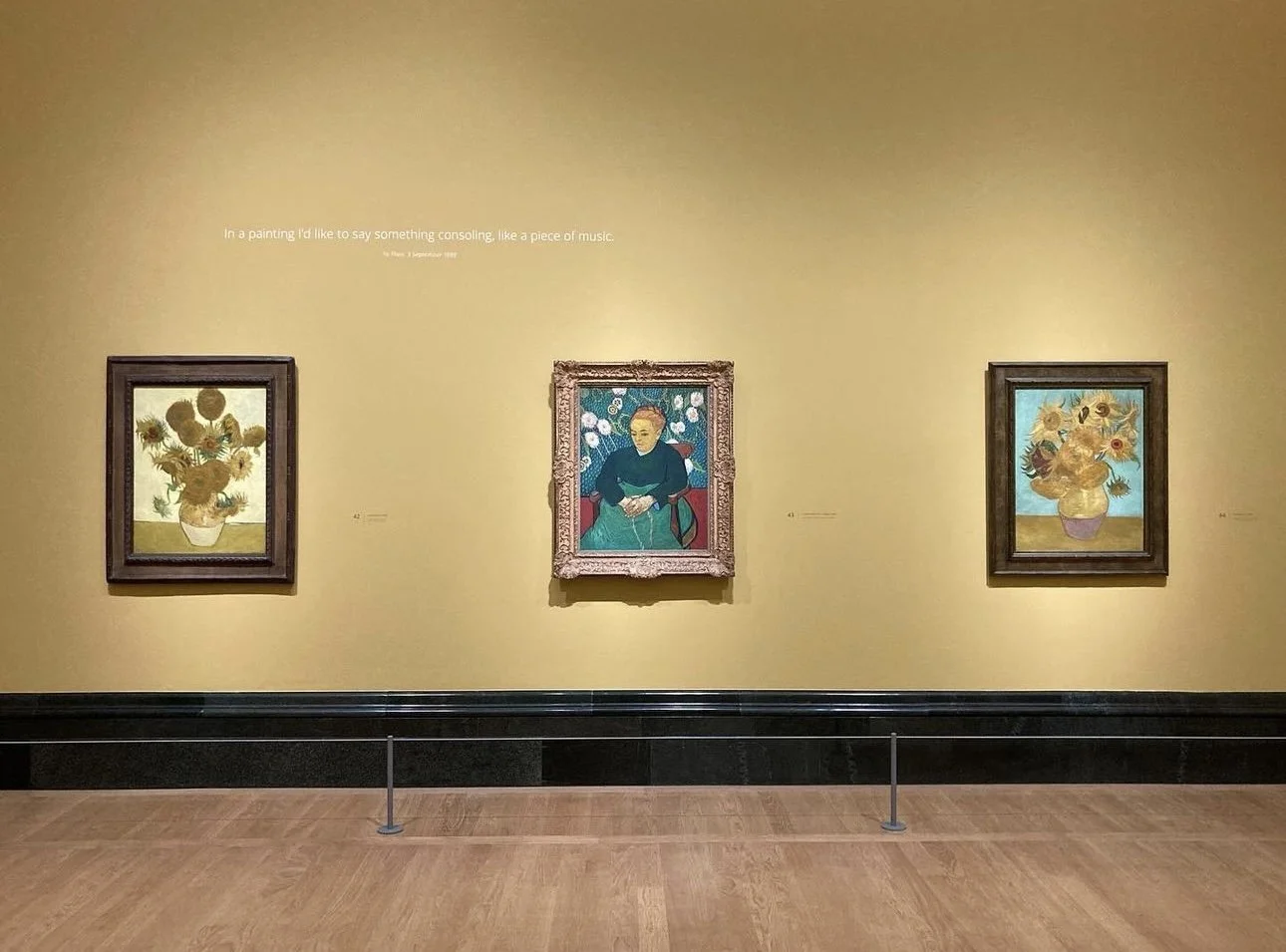Sunflower Studies
Symphony for Wind Ensemble
Premiered September 27, 2023 by the Arizona State University Wind Ensemble
Jason Caslor, Conductor
Excerpt from the fourth movement:
Sunflower Studies
I. Waiting for the Brightness of Tomorrow
II. No Blue Without Yellow
III. Interlude
IV. Seeking the Golden Light
V. Broken Colours
Program Note
Sunflower Studies is a symphony in five movements for wind ensemble that explores a love of sunflowers and what they represent. The same delight that compelled Vincent Van Gogh to capture the sunflower on canvas has also compelled my musical exploration of the beauty and meaning of the sunflower. The titles for movement 1 and movement 4 come from the beautiful nature of the sunflower itself, while the titles for movement 2 and movement 5 come from Van Gogh’s painting style. These movements are connected in the middle by a short interlude.
I learned much about Van Gogh and his work from reading the letters he wrote to his brother. He told his brother he wanted to make a series of sunflower paintings that would contain broken yellows against blue backgrounds. He described this series of paintings to his brother, “The whole thing will therefore be a symphony in blue and yellow.” His style of combining dark and light elements together on a canvas is similar to my style as a composer and this makes me feel as though I found a kindred spirit in Vincent.
Many different melodies are layered throughout the symphony. One of the melodies I used is the tune Tell Me the Old, Old Story, which was one of Van Gogh’s favorite hymns. The hymn has a child-like quality to it which displays sincere faith. Van Gogh said he wanted his paintings “to say something comforting as music is comforting...something of the eternal.” This melody alongside other lullaby-like melodies represent that source of comfort which the sunflower can bring.
Sunflowers are vibrant, beautiful, bold, and resilient flowers. Sunflowers had great significance for Van Gogh: they represented gratitude. For me, in a similar fashion, sunflowers exemplify faith and hope. We need hope while we are waiting. We need hope when things are dark or dim. We need hope in order to believe a brighter future exists. The sunflower gives us a brilliant visualization of what it looks like to have this kind of hope.
Instrumentation
Piccolo
2 Flutes
2 Oboes
2 Bassoons
Contrabassoon
(optional)
3 Bb Clarinets
Bass Clarinet
Soprano Saxophone
Alto Saxophone
Tenor Saxophone
Baritone Saxophone
4 Trumpets in Bb
4 F Horns
3 Tenor Trombones
Bass Trombone
2 Euphoniums
Tuba (div.)
Double Bass
Piano
Harp (optional)
Timpani + 6 Percussion
Additional Information:
This triptych contains Van Gogh’s Sunflowers on each side of his painting “La Berceuse” (The Lullaby). The Lullaby painting consists of a woman holding a rope that would be used to rock a cradle with a baby. Van Gogh wrote in his letters that he’d like one sunflower painting with a yellow background and one with a blue background on each side of “The Lullaby” because he considered it the ultimate way his work could give comfort.
When I first learned about this wish of his through reading these letters, it influenced my approach to how I was writing my piece Sunflower Studies. I knew I wanted to put melodies that would sound lullaby-like in nature throughout the piece. This also influenced the flow of the movements, as movements 1 and 2 are a pair and movements 4 and 5 are a pair. These pairs of movements are connected in the middle by an interlude.
Additional information for Movement 4 (this movement can be performed alone):
Vincent wrote that his Arles sunflowers were ‘almost a cry of anguish’, while also symbolizing gratitude. Anguish and gratitude. Two things we don’t always think go hand in hand, but perhaps they do? My fourth movement addresses this idea the most. Perhaps the more inner anguish one feels the more one tends to seek beauty. This movement will likely be the one I consider the cornerstone of the whole piece. It portrays the beauty, resiliency, and boldness of the sunflower. These are the qualities I believe make the flower such a great metaphor for faith itself. And perhaps these qualities are why Van Gogh thought sunflowers symbolized gratitude.

